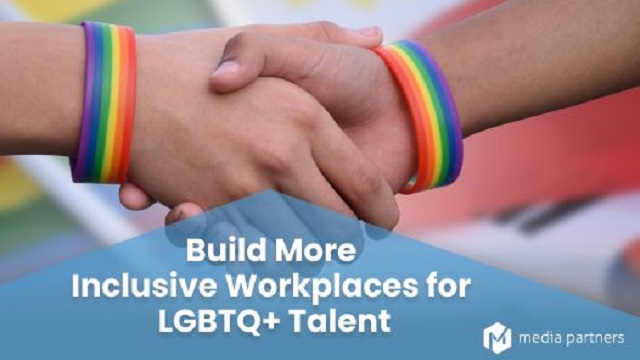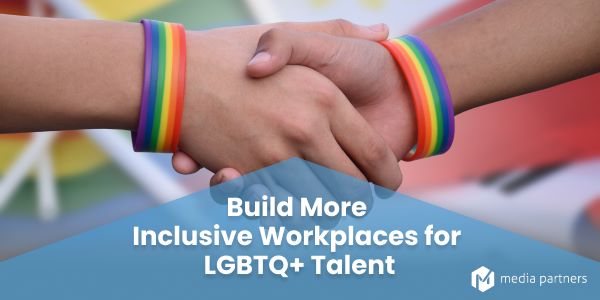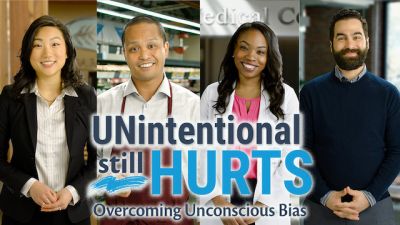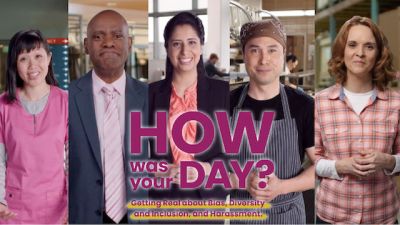How to Build More Inclusive Workplaces for Your Organization's LGBTQ+ Talent



Organizations choosing to reaffirm their commitments to diversity, equity and inclusion (DE&I) must ensure that LGBTQ+ workers are not overlooked.
According to the latest research from Gallup, the percentage of individuals in the U.S. who identify as LGBTQ+ has doubled over the past decade, rising from 3.5% in 2012 to 7.1% in 2022.
Researchers say that the increase “largely reflects the higher prevalence of such identities among the youngest U.S. adults compared with the older generations they are replacing.” Illustrating that idea, about one in five Gen Z (born 1997 – 2003) adults identifies as LGBTQ+. That figure is about double the percentage of millennials identifying similarly.
To support genuinely respectful and inclusive workplaces, LGBTQ+ employees need to feel valued and supported. It is also helpful to provide employees who don’t identify as LGBTQ+ with opportunities to learn about and support the community.
Everyone Contributes, Everyone Should Count
For employers, the importance of a commitment to inclusion of everyone – and freedom for all employees to be themselves at work – cannot be overstated.
McKinsey has researched the business effect of diversity, equity, and inclusion for more than a decade, and says: “Our latest analysis reaffirms the strong business case for both gender diversity and ethnic and cultural diversity in corporate leadership—and shows that this business case continues to strengthen. The most diverse companies are now more likely than ever to outperform less diverse peers on profitability.”
A highly regarded benchmarking tool documenting policies and practices related to LGBTQ+ employees in the U.S., the Human Rights Campaign (HRC) Foundation’s Corporate Equality Index 2022, surveyed nearly 1,300 companies—379 of them among the high-performing Fortune 500. Data showed that all of the participating Fortune 500 firms included sexual orientation and gender identity in their nondiscrimination policies. Further, 95% had made a public commitment in support of the LGBTQ+ community.
Despite the evidence of positive business results presented by McKinsey and others, updated research from Catalyst confirms that LGBTQ+ employees often remain under-represented and unfairly treated in workplaces worldwide:
| • |
In the U.S., 45% of LGBTQ+ employees report experiencing harassment, hiring discrimination, termination, or other unfair treatment at work. In Canada, 44% of LGBTQ+ workers report unfair treatment; and in the European Union, about one in five. |
| • | LGBTQ+ workers in the U.S. earn less – about 90% of what typical employees earn. |
| • | Two-thirds of U.S. LGBTQ+ employees say they’ve endured slurs, jokes, and negative comments about LGBTQ+ people in the workplace |
| • | More than one in four LGBTQ+ employees (26%) are not out to anyone at work. |
| • | More than four in 10 LGBTQ+ employees (41%) say they alter their behavior on the job to avoid discrimination and harassment. Among transgender workers, the figure rises to about 58%. |
| • | Respect at work plays a role in retention of LGBTQ+ employees: 34% say than a non-accepting work environment caused them to leave a job; the same percentage say they’re actively looking for other employment for the same reason. |
In a business world where better results are proven to exist in companies that excel in DE&I, it is clear that much work remains to be done to ensure that the LGBTQ+ community can fully contribute in workplaces where they will be respected, valued, and feel safe to be themselves.
What Do All the Letters Mean?
There are many variations on the basic LGBTQ+ acronym. A quick primer:
Lesbian - a woman/woman aligned person attracted to people of the same sex.
Gay - refers to men/men aligned individuals attracted to people of the same sex. Can also refer to lesbians.
Bisexual - individuals attracted to all genders. Includes transgender, binary, and non-binary people.
Transgender - describes individuals whose gender identitiy differs from that assigned to them at birth.
Queer (and Questioning) - may describe anyone non-cisgender or heterosexual. Because queer is sometimes used as a slur, it should only be applied to htose who specifically identify with it. Questioning describes people who are unsure of their sexual orientation or gender identity.
The plus (+) is added as a means to include others who don't feel they fit the LGBTQ descriptions. Examples: Asexual, Intersex, Pansexual, and Two-Spirit (pan-Indigenous American identity).
Source: Verywellmind.com
Why Inclusion Training is Important
When working to build an inclusive workplace, it's important to address things that block inclusion, such as unconscious bias. This example shows how training that uses relatable scenarios can help people turn unintentional offenses into opportunities for increased understanding.
How Can Employers Make Workspaces More Inclusive for LGBTQ+ Workers?
When it comes to ensuring that your organization is taking effective action to create respectful and inclusive environments for LGBTQ+ employees, the following strategies can help you get started:
| 1. | Begin with a statement of your organization’s commitment to inclusive workplaces that provide support for LGBTQ+ employees. Ensure that formal nondiscrimination policies are in place and that they are clearly communicated in appropriate materials/media and are considered in talent-related decisions and operations. Set the expectation that all employees will act in ways that ensure respectful workplaces for all, and specify both desired and inappropriate behaviors. |
| 2. | Provide training for employees and leaders/managers at all levels to ensure that everyone understands the organization’s commitment to LGBTQ+ workers, knows and uses appropriate language, and understands how to recognize and constructively address bias (including unconscious bias) and discrimination. Media Partners offers a wide range of respectful workplace training programs to support inclusive organizational cultures. |
| 3. | Enable employee resource groups (also known as business resource groups or affinity groups) that create internal communities of LGBTQ+ workers and aid in professional development and networking. |
| 4. | Recruit and advance LGBTQ+ talent. Audit talent acquisition practices to ensure that outreach efforts make clear your organization’s commitment to inclusivity and that sourcing methods reach the LGBTQ+ community. Confirm that performance and succession practices are inclusive for LGBTQ+ employees. |
| 5. | Advocate for LGBTQ+ talent by identifying and enlisting the support of internal ambassadors, mentors, and other allies who are willing to be visible champions and actively foster inclusion and development. |
| 6. | Align total rewards programming to be inclusive of LGBTQ+ employees. Review all offerings to confirm equal access to healthcare, financial, retirement, and other benefits for all employees and same-sex or other LGBTQ+ couples. Because healthcare benefits can be of critical importance to transgender employees, ensure inclusive coverage. |
The preceding strategies can help organizations get a strong start on building inclusive workplaces for LGBTQ+ employees. For additional support and suggestions, call on Media Partners for engaging, behavior-changing training, and access to professional facilitators who can lead sensitive conversations with expertise and insight.




